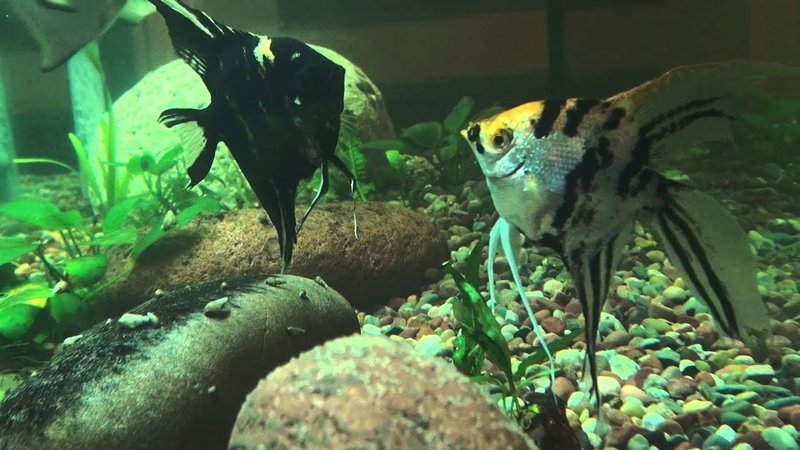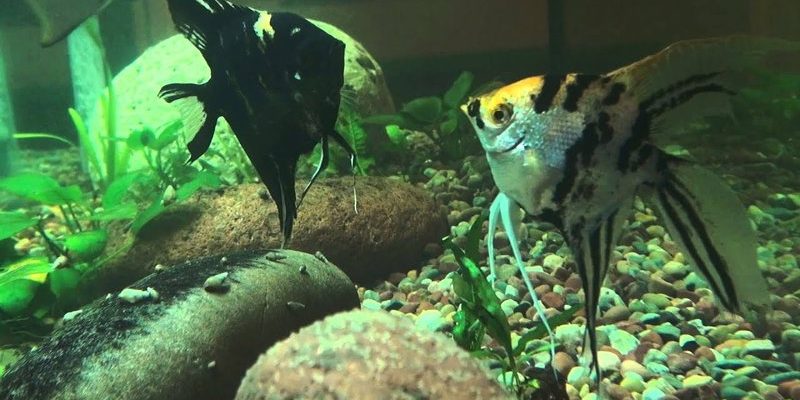
Let’s dive into the world of marine angelfish breeding. It’s not just about having the right tank or the perfect water conditions; it’s about understanding their unique behaviors and needs. Spoiler alert: success doesn’t come in a single, easy step. But with the right approach, you can create a thriving environment for these beautiful fish, and maybe even see some little fry swimming around one day!
Understanding Marine Angelfish Behavior
Before you get started, it’s crucial to understand how marine angelfish behave. These fish are not just pretty faces; they have distinct personalities and social structures. Honestly, think of them like little underwater communities with their own rules. In the wild, angelfish establish a hierarchy, and this can affect how they interact with each other in your tank.
First off, marine angelfish are generally territorial. A single angelfish can be quite aggressive, especially when trying to claim a space or during breeding. If you want to breed them, it’s essential to have a dedicated breeding pair. You might be wondering how to tell who’s compatible. Look for signs of courtship behaviors, like gentle nipping or following each other closely. These are good indicators that your fish are interested in each other.
Additionally, providing hiding spots and separate territories in your tank can help manage aggression. Just like people, they need their personal space sometimes. Use rocks, plants, or decorations to create a more natural environment, giving them spots to retreat if needed.
Preparing the Right Environment
Creating the perfect breeding environment for marine angelfish is half the battle won. Keep in mind that they thrive in clean, stable water conditions. Use a good-quality aquarium filter and perform regular water changes. Aim for a temperature between 75°F and 82°F, with a salinity around 1.020 to 1.025. You might not notice these changes immediately, but over time, they can significantly impact your fish’s health and spawning habits.
Lighting is another crucial factor. Marine angelfish are more likely to breed if they feel secure and comfortable, which often involves simulating their natural habitat. A dim light or a light that mimics natural sunlight can help set the mood. But here’s the thing: don’t shine bright lights directly on them. It can cause stress, which is the opposite of what you want.
Also, consider using a breeding substrate. Some angelfish prefer to lay their eggs on flat surfaces, so providing a smooth rock or a ceramic tile can improve your chances of seeing a successful spawn. It’s like setting up a cozy little nursery for them!
Feeding for Breeding
Nutrition plays a massive role in breeding success. A well-balanced diet can significantly improve the chances of spawning. You might think any fish food will do, but that’s where you’ll want to be picky. High-quality marine flakes or pellets should be the base of their diet, but consider adding some fresh or frozen foods like brine shrimp, mysis shrimp, or spirulina for extra boost. These foods not only provide essential nutrients but also encourage natural spawning behaviors.
Offering food multiple times a day in small amounts is a good practice. Think of it as treating them to a buffet! Just remember not to overfeed—leftover food can lead to poor water quality, which will stress your fish.
And if you’re really dedicated, you can even try to include some live foods in their diet. This mimics their natural hunting instincts and can stimulate their breeding behaviors. Just be sure any live food you provide is safe and free from disease.
Identifying a Breeding Pair
Identifying a breeding pair of marine angelfish can feel like trying to spot a needle in a haystack at times. Not all angelfish will get along, and even those that seem compatible might need a bit of time to bond. Generally, a male will be slightly larger and more colorful than the female. Males often develop larger fins and display more pronounced courtship behaviors.
To make sure you have a breeding pair, observe them for a few weeks. You’ll want to see them spending time together and engaging in playful behaviors. If you notice a lot of chasing or aggression, you might need to adjust the tank setup or separate them for a while.
Once you’ve identified a pair, keep an eye on their interactions. Look for the female to start preparing a spawning site, which might involve cleaning a flat surface. This is a clear sign she’s ready to lay eggs.
The Breeding Process
Once your marine angelfish are a happy couple, they may soon enter the breeding process. Angelfish typically spawn in groups, so if you have more than just the pair, they may all join in on the fun, but it’s usually the pair you’ll be focusing on. The female will lay eggs, and the male will fertilize them shortly after.
You might see the female laying her eggs in a tight cluster. The eggs can appear like tiny yellow or white dots, and they usually stick to the breeding surface. After laying the eggs, you can expect them to be protective. The pair will often take turns guarding the eggs from potential threats.
But here’s a little warning: not all eggs will hatch. It’s normal for some to be infertile, but if you notice a lot of them turning white, that’s a sign of poor water quality or stress. Make sure to keep conditions stable and clean during this time.
Raising Angelfish Fry
If you’re lucky enough to have angelfish fry, congratulations! Raising them is an entirely different journey, though. Fry are incredibly small and will need special care. For the first few days, they will rely on their yolk sacs for nutrition. After that, they will need to be fed a diet of finely crushed flakes, infusoria, or even specialized fry food available at pet stores.
Water quality is essential at this stage as well. Keep the tank clean, and perform regular water changes. However, be gentle when doing so to avoid shocking the delicate fry. A sponge filter can be a good option to provide filtration without sucking up the tiny fish.
As the fry grow, gradually introduce larger foods. You want to ensure they develop properly and healthily. In a few weeks, you should start to see their colors and shapes emerge, signaling that your hard work is paying off.
Common Challenges and Solutions
Breeding marine angelfish in captivity isn’t without its challenges. One of the biggest issues is disease, which can strike your fish when least expected. Preventing illness is all about maintaining a clean and healthy environment. Regular testing of water parameters—such as pH, ammonia, and nitrates—can help detect problems before they escalate.
Another common issue is aggression. As the fish mature, they may begin to squabble or display territorial behaviors, especially if they feel crowded. Make sure to provide enough space and hiding spots in the tank. If conflicts arise, you might need to separate them temporarily until they can settle their differences.
Lastly, spawning may sometimes fail due to stress or inadequate conditions. If you find that your pair isn’t successful after several attempts, it’s worth revisiting their water conditions and tank layout. Creating a more serene and comfortable environment can make a world of difference.
Final Thoughts on Breeding Marine Angelfish
Breeding marine angelfish in captivity can be a rewarding yet challenging adventure. It’s a journey filled with learning experiences, patience, and, of course, a little good fortune. Remember to focus on creating a stable environment, providing nutritious food, and fostering a pair that truly connects.
As you move forward, keep experimenting and watching for those unique behaviors that signal happiness and readiness to breed. With the right approach and a little love for your underwater friends, you might just find yourself witnessing the miracle of life right in your home aquarium. Happy fishkeeping!

